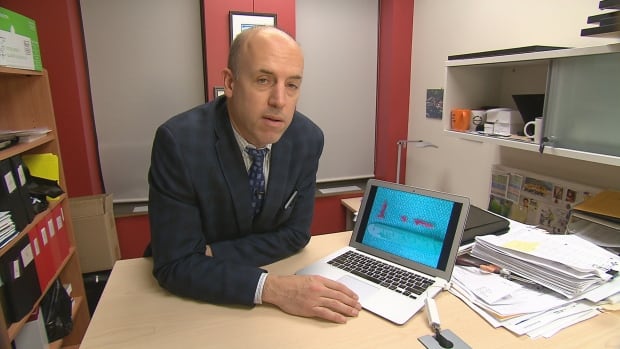New emergency brain procedure saving stroke patients
Every eight minutes someone in Canada has a stroke. But the odds of survival are getting better because of a new emergency intervention being offered at 22 hospitals across Canada.
Spencer Higdon, 63, successfully received the procedure at Toronto Western Hospital in April after suddenly collapsing in his bathroom.
“I was stepping into the shower and I dropped like a tonne of bricks.” he said.
When he regained consciousness he knew he’d had a stroke. “I couldn’t move my right leg, my right arm, I couldn’t speak, and I had difficulty moving my head.”
Physicians confirmed he’d had an ischemic stroke — a blood clot in his brain.
Unless the blockage was cleared within a few hours, his paralysis would likely be permanent, or worse, he’d die.
‘Locked-in’ syndrome
Higdon later learned from one of the treating physicians that because of the position of the clot in the brainstem, the consequences of his stroke could have been devastating.
“She said it’s called ‘locked-in syndrome,’ where your brain works just fine but nothing else in your body moves. You’re lying in a bed and the only way to communicate is through your eyes. And that just horrified me.”
How a thrombectomy works0:22
The procedure used to remove Higdon’s clot, known as a thrombectomy, involves feeding a tiny catheter into an artery near the groin, all the way up into the brain and through the blockage.
The device is expanded to grab the clot. Then it’s pulled out, allowing the blood to flow again. Advanced imaging equipment helps navigate the catheter.
For Higdon, the entire procedure took eight minutes, a record for the stroke team at Toronto Western.
Clot-busting drugs limited success
Before the advent of thrombectomies, the only other option for urgent blockage removal was clot-busting drugs, which despite being considered a breakthrough when they were introduced 20 years ago, have limited success.

Dr Michael Hill, who helped pioneer the development of thrombectomies in Canada, shows pieces of a clot retrieved from a 31-year-old stroke patient. (CBC)
Dr. Michael Hill, a stroke specialist in Calgary, helped pioneer the development of thrombectomies in Canada.
“Now we’ve shown that we’re actually saving lives. We’re not only reducing the disability, we’re reducing the mortality from these big strokes by about 50 per cent. So this is another big leap.”
Hill acknowledges the procedure needs to be performed carefully to avoid risk of causing further brain damage.
Highly specialized team required
However, unlike clot-busting drugs, which can be administered intravenously by frontline physicians, a thrombectomy requires a highly specialized team that includes an interventional neuroradiologist — a subspecialty that was only recognized as such by the Royal College of Physicians and Surgeons of Canada in 2013.
As a result, the procedure is available at only select health-care centres in Canada. Manitoba, P.E.I., and Newfoundland and Labrador currently don’t offer the treatment.
Patrice Lindsay is a director at the Heart Stroke Foundation of Canada — the agency coordinating the roll-out of the treatment across the country.
“We’re not there yet because of the geography and about 20 per cent of our population living outside the window. But we’re working really hard to figure out how to work around that.”
While the majority of strokes strike people over 65, 10 to 15 per cent affect individuals 45 and younger — and that number is on the rise.
- Strokes on the rise among young people
The Heart Stroke Foundation hopes the wider availability of thrombectomies will help reduce both fatalities and disabilities caused by stroke.